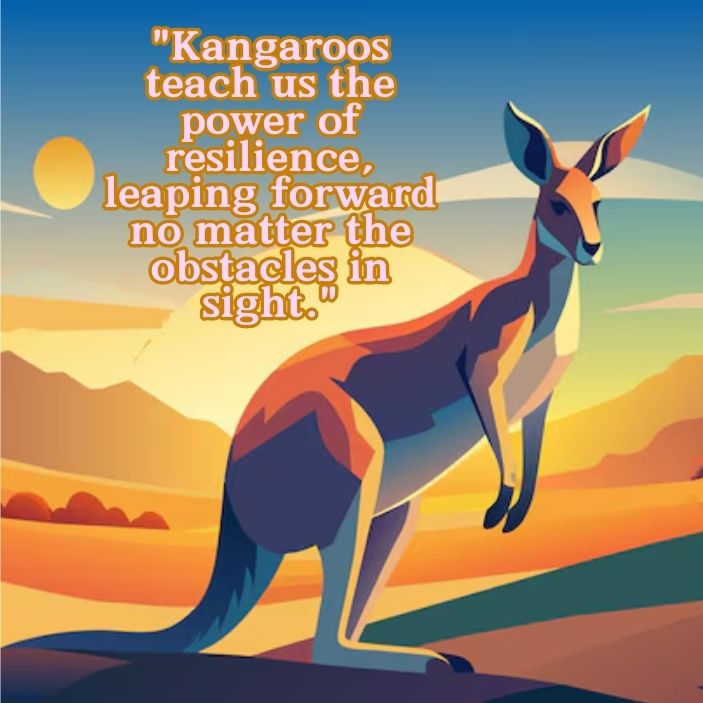
“What Makes Kangaroos So Unique? The Secrets Behind These Amazing Jumpers”
Kangaroos are one of Australia’s most iconic animals, instantly recognizable for their powerful hind legs, long tails, and the pouch that females use to carry and nurture their young. These remarkable creatures are not just a symbol of Australian wildlife; they are an integral part of the ecosystem, contributing to biodiversity, soil health, and the balance of local flora and fauna. Yet, despite their cultural significance and environmental role, kangaroos are facing increasing pressures from habitat loss, climate change, and human activities. In this post, we’ll explore why protecting kangaroos is crucial for both their survival and the health of the Australian environment.
The Unique Role of Kangaroos in Australia’s Ecosystem
Kangaroos are more than just cute and cuddly creatures hopping around the Outback. They play a vital ecological role in maintaining the health of Australia’s natural environment. As herbivores, they graze on grasses, shrubs, and plants, helping to control vegetation and ensure that ecosystems do not become overrun by invasive species. This grazing also promotes new plant growth by allowing younger plants to emerge and thrive.
Kangaroos also contribute to soil health. Their grazing habits help aerate the soil, allowing for better water infiltration and nutrient cycling. In doing so, they support the biodiversity of the land, benefiting other species that rely on these ecosystems for survival, including birds, reptiles, and smaller mammals.
In addition to their role in the food chain, kangaroos are an important source of food for predators, including dingoes and large birds of prey. Their position in the food web makes them a keystone species, meaning that the health of kangaroo populations directly impacts the stability of the entire ecosystem.
Threats to Kangaroo Populations
1. Habitat Loss and Fragmentation
Australia’s rapid urbanization and agricultural expansion are major threats to kangaroo populations. As cities grow and farmland stretches across the landscape, large swaths of natural habitats are destroyed or fragmented, leaving kangaroos with fewer places to roam. This loss of habitat has a twofold impact: it not only reduces the available food sources for kangaroos, but it also limits their ability to find safe places for shelter and reproduction.
Fragmentation of habitat also causes smaller populations to become isolated. Without a connection to other groups, these isolated populations become more vulnerable to inbreeding and genetic decline, making it more difficult for them to adapt to environmental changes.
2. Climate Change and Drought
Australia is a land of extremes, known for its dry deserts and unpredictable weather patterns. However, the effects of climate change have intensified these challenges. Rising temperatures and prolonged droughts are straining kangaroo populations, as they rely on stable ecosystems with sufficient water and food.
As rainfall becomes more irregular and temperatures soar, vegetation in many areas of Australia has become less reliable as a food source for kangaroos. Drought conditions also exacerbate competition for resources, not only between kangaroos but also with other herbivores. This can lead to malnutrition, weakened immune systems, and a higher susceptibility to disease among kangaroo populations.
3. Human-Wildlife Conflict
Kangaroos often find themselves in conflict with human activity. As urban sprawl encroaches on natural habitats, kangaroos are increasingly forced to venture into agricultural areas or suburban zones in search of food and water. This results in road collisions, particularly in rural areas where kangaroos are common, leading to injury and death. These accidents are not only tragic for the animals but also pose a safety risk for motorists.
Additionally, kangaroos are sometimes seen as a nuisance to farmers, who view them as competitors for crops and pastureland. In response, kangaroo culling programs are sometimes implemented, aiming to reduce their numbers and protect agricultural interests. While these programs are controversial and often criticized by animal rights groups, they are driven by the perceived need to balance kangaroo populations with human interests.
4. Illegal Hunting and Poaching
Although kangaroos are protected by Australian law, illegal hunting still poses a threat to some species. Kangaroo products, such as meat and hides, are sometimes sold on the black market, despite international regulations. Poaching further complicates conservation efforts and undermines legal protections meant to preserve kangaroo populations for future generations.
Why Protecting Kangaroos Matters
1. Biodiversity and Ecosystem Health
Protecting kangaroos is essential for preserving biodiversity and maintaining the delicate balance of Australian ecosystems. As mentioned earlier, kangaroos are a keystone species in many habitats. Their grazing helps maintain a balance between different plant species, and their presence supports other animals in the food chain. Without kangaroos, the ecosystems they inhabit would be less resilient, less diverse, and less capable of adapting to changes in climate or environment.
Conservation efforts aimed at protecting kangaroos help ensure that Australia’s unique wildlife—ranging from reptiles to birds to smaller mammals—can continue to thrive. By safeguarding kangaroos, we protect the broader environment in which they live.
2. Cultural and Ecological Significance
Kangaroos are integral to Australia’s cultural identity. They appear in the national emblem, the Australian coat of arms, and are featured in countless artworks, souvenirs, and advertisements. For Indigenous Australians, kangaroos have deep cultural significance, appearing in traditional stories and artwork that reflect the long-standing relationship between Indigenous communities and the land.
Beyond cultural symbolism, kangaroos are vital to the economic well-being of Australia’s tourism industry. Wildlife tourism, including kangaroo sightings, is a significant draw for visitors. The loss of kangaroo populations could have an adverse impact on tourism, which depends on the allure of Australia’s unique wildlife.
3. Ethical Responsibility and Animal Welfare
As stewards of the planet, humans have an ethical responsibility to protect the animals that share our world. Kangaroos are highly adapted to their environments, but they also face immense challenges in the modern world. Ensuring their survival isn’t just about preserving a species; it’s about acknowledging our responsibility to protect the well-being of all living creatures that depend on the land.
Culling and poaching are inhumane practices that fail to address the root causes of kangaroo population decline. Instead of focusing on killing kangaroos, the focus should shift to habitat restoration, sustainable land management, and policies that support healthy wildlife populations.
Conservation Efforts: What Can Be Done?
Several organizations, both governmental and non-governmental, are working to protect kangaroos through habitat restoration, research, and advocacy. Programs that focus on preserving natural habitats, establishing wildlife corridors to reconnect fragmented populations, and regulating culling practices are all crucial for the future of kangaroos in Australia.
In addition, public awareness campaigns can educate people about the importance of kangaroo conservation and encourage responsible interactions with wildlife. By fostering a deeper appreciation for kangaroos and their role in the ecosystem, we can create a future where both humans and kangaroos can coexist in harmony.
Conclusion
Kangaroos are more than just Australia’s iconic creatures—they are a vital part of the country’s natural heritage and ecosystem. Protecting these unique animals ensures the health of the environment, preserves biodiversity, and honors the cultural connections Australians share with their land. As we face increasing environmental challenges, the need for sustainable practices and effective conservation strategies has never been greater. By committing to the protection of kangaroos, we are also committing to the preservation of Australia’s natural beauty for generations to come















